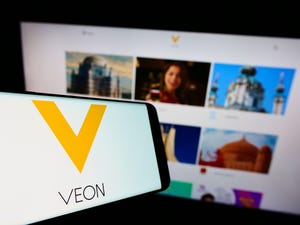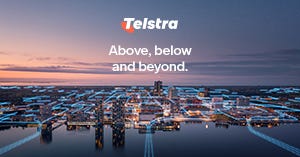
Autotalks last week said it would expand its vehicle-to-everything (V2X) partnership with Hyundai Mobis – the carmaker's division focusing on mobility sensors and software. Hyundai Mobis already uses Autotalks for its Mobis MTCU generation 1 modules. Its next generation will also use the Israeli company's technology to offer more advanced features in new vehicles starting in 2024.
Media reports broadly categorize the deal as 5G-based, or about cellular V2X (C-V2X) – a technology that is slowly but steadily making its way into cars worldwide, despite many European obstacles.
More specifically, the technology will include what Autotalks calls Day 2 V2X, which receives signals from other vehicles' sensors, for example when there is a risk of a side collision because a driver cannot see the other car. This is in addition to so-called Day 1 capabilities, which provide the vehicle with basic situational awareness, such as alerting a driver to a vehicle braking in front without taking any automatic action.
Autotalks is set to be acquired by Qualcomm in a deal reportedly worth between $350 million and $400 million. Antitrust probes in the EU and US could, however, interfere with that.
But what exactly is V2X? The term combines vehicle-to-vehicle (V2V) and vehicle-to-infrastructure (V2I) communications. A car using V2X should be able to communicate with its surroundings to enhance safety and traffic fluency. In a (more or less) distant future where the technology matures and becomes prevalent, a car could rely on it for real-time traffic information, coordination with other vehicles when changing lanes and to improve traffic flows or be alerted to an approaching cyclist.
While the idea of V2X communications has been around for many years, the technology has not yet become widespread. It has been hindered by a lack of infrastructure deployment as well as a split within the industry as to which communication standard should be used.
Long way to go
Many countries, including the US and China, are focusing on 5G. But in Europe, an older dedicated short-range communications standard, called DSRC, has long been in use, mainly because of support from Volkswagen. It is relatively cheap to implement and based on more established technology, but its main use is collision avoidance, giving it a narrower range of applications than 5G. The longer-range cellular technology can also be used for navigation, traffic data and entertainment, as well as (in theory) autonomous driving.
After years of debate, there now seems to be consensus that 5G is the way forward, with the European Union (EU) acknowledging it will likely play a key role in future transportation systems. As part of the Connecting Europe Facility, an EU fund set up in 2014 for infrastructure investments, numerous 5G corridors are being built for the purpose of connected and autonomous mobility. But the process might not be a quick one.
It will cost between €5 billion (US$5.4 billion) and €18 billion ($19.5 billion) to provide connectivity to all the highways included in the program, according to Vodafone's estimates. The project's outlay, however, is only €1 billion ($1.08 billion) for the 2022-2027 period. One of the key cost drivers, according to the telco, will be providing fiber connectivity to new mobile sites near major routes. Vodafone has complained of access issues in most European countries, which complicate the task.
Vodafone has been involved in V2X development, showing it could be an opportunity for telcos. Working with Nokia and Chordant as part of the Safer Transport for Europe Platform (STEP), it has developed a system that allows public authorities to send information about road closures and accidents, among other things, to smartphones and navigation systems. The technology could be further expanded to alert large vehicles to nearby pedestrians and cyclists, and to monitor road usage in real time.
But reliable coverage is important for the technology's success. Recently, a festival in San Francisco overloaded wireless networks, resulting in a traffic jam as a dozen Cruise robotaxis lost connectivity. While any impact on V2X would probably be less damaging, patchy coverage would likely cause confusion and dilute confidence in the technology.
Last year, ABI research predicted that V2X adoption will only truly take off when it becomes embedded in Euro NCAP safety standards. But V2X now seems unlikely to be essential for a five-star rating until 2029. Even though Europe had the largest fleet of connected vehicles as of 2021, this was due to Volkswagen's inclusion of DSRC modules in its cars. China, where V2X will be included in NCAP ratings from 2024, seems to be overtaking it.
On the carmakers' side, 5G support is also far from ubiquitous. According to a report jointly published by Omdia (a sister company of Light Reading), Wards Intelligence and Wards Auto, carmakers are only now starting to incorporate 5G in vehicles. And V2X is not necessarily the main driver, with systems like telematics and infotainment also requiring connectivity.
Even though 5G has been available for years, high costs have prevented carmakers from leaning on it earlier. Bad experiences with using older, inexpensive 3G modules in cars, and then having to deal with the technology's sunset, have nevertheless prompted them to move on from 4G, which is the dominant cellular technology in cars today. With 4G expected to shut down in the 2030s, they don't want a repeat of the US 3G sunset, which shut down 3G-reliant emergency systems in cars – a situation that could also happen in European markets.
Related posts:
— Tereza Krásová, Associate Editor, Light Reading
About the Author(s)
You May Also Like












